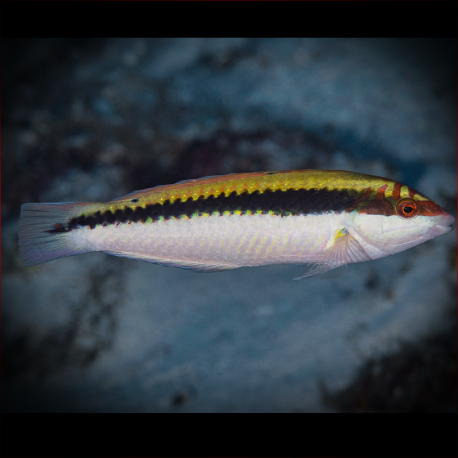More info
Datasheet
| Minimum Tank Size | 600 litres / 158.50 US gallons |
| Maximum Size | 18.0cm / 7.09inches |
| Reef Compatible | Reef safe with caution |
| Temperament | Mostly peaceful but might be aggressive towards similar species |
| Temperature | 22.2°C / 71.96°F - 25.6°C / 78.08°F |
| Specific Gravity | 1.020-1.025 |
| Carbonate Hardness | 8-12 |
| pH | 8.1-8.4 |
General Description: The Clown Wrasse, scientifically known as Halichoeres maculipinna, belongs to the Labridae family and is highly popular in aquariums due to its striking appearance and efficacy in controlling flatworms and pyramid snails. These fish are peaceful compared to other species but can outgrow smaller tank setups. They exhibit varied feeding habits, with some consuming small invertebrates and others capable of crushing crustaceans. In times of threat or rest, Clown Wrasses bury themselves in the sand and have a strong biological clock that may take time to adjust post-transportation.
Aquarium Suitability: Suitable with careful consideration due to their attractive nature and usefulness in pest control, but caution is advised regarding tank size and tankmates. They do best as pairs or with one male and multiple females, and are known to be delicate when young. Clown Wrasses are sensitive during transportation and require a deep sandy substrate, at least 2 inches deep.
Care and Hardiness: With an average hardiness level, these Wrasses are hermaphroditic, capable of changing gender from female to male. They are sensitive during transportation and acclimatization but adjust well if introduced at a young age. Specific attention should be paid to potential injuries around the mouth during transport.
Reef Suitability: Reef safe with caution, as they may pose a threat to crustaceans like shrimps and crabs due to their feeding habits.
Aquarium Setup: A minimum tank size of 600 liters is recommended for Clown Wrasses, with a deep sandy substrate to facilitate their burying behavior when stressed or sleeping. Maintaining water conditions within specific parameters of pH (8.1-8.4), alkalinity (8-12 dKH), salinity (1.020-1.025), and temperature (72-78°F or 22.2-25.6°C) is crucial for their well-being.
Behaviour: These Wrasses display mostly peaceful behavior but can become aggressive towards similar species. When threatened, they may jump out of open aquariums, so proper tank cover is essential to prevent escape.
Feeding and Diet: Clown Wrasses have a varied diet, consuming larger crustaceans, other invertebrates, small crustaceans like krill and artemia, and zooplankton such as cyclops and pods. They are known to feed on flatworms and pyramid snails.
Dimorphism: Clown Wrasses are hermaphroditic, allowing for gender changes from female to male as needed within their social structures.
Habitat and Distribution: These fish are found in the Western Atlantic, ranging from North Carolina, USA to Bermuda and Brazil. Wrasses in general are commonly found in reef aquariums due to their attractive appearance and beneficial role in controlling unwanted invertebrates.

